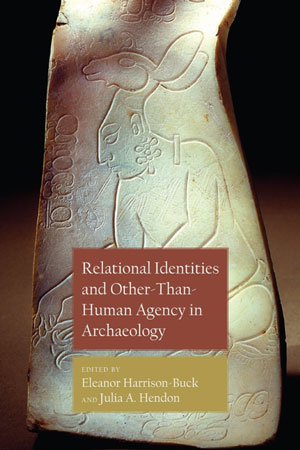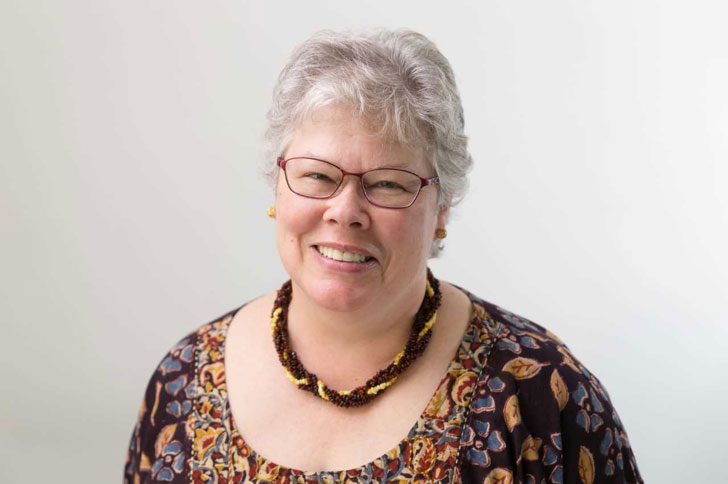 Relational Identities and Other-than-Human Agency in Archaeology. Wow, that title sounds both impressive and intimidating at the same time, but don’t let it fool you: the topic of this book is surprisingly simple and vastly interesting.
Relational Identities and Other-than-Human Agency in Archaeology. Wow, that title sounds both impressive and intimidating at the same time, but don’t let it fool you: the topic of this book is surprisingly simple and vastly interesting.
The entire topic can be boiled down to challenging the notion of separating objects as things and people as, well, persons. Co-editor of the book and anthropology professor Julia Hendon explains that archaeologists have often encountered cultures and societies that have different beliefs about what a person is. Often, she says, these other-than-human persons can include animals, ancestors and other dead, elements of the natural world, and things that people make. Hendon points out that this idea can be seen “in contemporary western society as well, particularly in the way we think about animals most of all.” Hendon further discusses how these ideas of personhood then imply differences in how people interact with and value these objects.
These topics held some attention in archaeological theories in the past but dropped out of focus for a while before re-gaining attention in the 1990s. The importance of these ideas surround how they impact the relationships people have with the natural world. “It helps to explain a lot of aspects of common cultural elements that seem otherwise illogical or impractical because of the kinds of way people are relating to one another not just as human beings but as other persons or objects,” Hendon explains.
The book project would take four to five years to complete, but the starting point for this specific exploration was a session at Society for American Archaeology that also focused on this topic of other-than-human agency. Hendon found many of the ideas being put forward interesting and the work innovative, which then sparked the idea of a book coming at this topic from multiple perspectives and led her to her co-editor Eleanor Harrison-Buck, who had organized a similar, earlier session.
Hendon’s personal interest, though, started much earlier with her book Houses in a Landscape: Memory and Everyday Life in Mesoamerica that explored the idea of identity and agency being relational within societies. Through this work, she realized that people were forming relationships not just with other people but also things that were not human beings. “It’s very clear people are interacting with them in ways that treat them as persons,” says Hendon. This led her to previous writings about Mayan beliefs, where it was widely understood and accepted that these indigenous cultures felt there was a certain essence, often translated as a soul, that made a person a person. However, Hendon explains that this essence wasn’t automatic, which is probably the idea that deviates most from Western, modern assumptions. There were instead a series of rituals and ceremonies that people went through as they grew up that granted them personhood. Following this line of thought, it was also possible to lose that identity of personhood by violating certain ideas. These specifics, though, would sometimes get lost and lead to slippage in broad statements that assumed “everything is animate, has agency, and has a soul.” This made Hendon think, “Well, if that applies to people, then we have to ask that about all these other parts of the world. So what are the kinds of circumstances that they would go through for this process?”
As she got further into ideas of agency, Hendon turned to interactions with death, specifically the interactions the living have with the dead and burials. It was in this research that she realized people sometime buried objects on their own in a similar way to how a person would be buried. She was able to connect these finding to translations of Mayan hieroglyphics that gave voice to the object instead of the person it belonged to. For example, the text on an object wouldn’t say, “This is my ear spool,” but “I am the ear spool of So-and-so.” This voice is a sign of the Mayan belief of other-than-human personhood since talking is seen as a sign of being a person. This was the point when a lot of ideas were coming together for Hendon in “how these ancient cultures viewed the world around them and how it, ultimately, reflects back on our contemporary world.”
One of the great aspects about the book is how the contributors are a mix of newer and well established professionals in the field who can each offer different perspectives. The contents cover many different parts of the world and time periods. Each chapter, Hendon describes, is strong on its own yet integrates well with the other chapters. Hendon says that every chapter is her favorite and she appreciates the time and effort each author put into the work.
Hendon’s chapter within the book keeps in line with her Mayan specialty but focuses on objects that were given personhood while being a little further away from objectively looking human: tools. She says, “There are certain objects within Mayan society that are very easy to see as persons in their figurine traditions and sculptures probably because they look like people. It’s very clear people are interacting with them in ways that treat them as persons.” Hendon goes a step further, though to look at these tools that weren’t necessarily for ritual purposes or in elaborated, human-like shapes. Instead, she says, “Let’s look at things that are more utilitarian, the tools that they’re making that they’re using to make some of these things.” She admits that she didn’t end up finding all the answers, but that it was a great starting point.
The one thing Hendon says she’d like people to take away from the book is “For people to accept the idea that we all live in a world in which there are more than human beings and that our interactions and relationships with that full range of beings is really part of what makes us human. It is essential, not something we should try to ignore or pretend doesn’t exists.” She thinks that “If we do that then we’ll have a better sense of who we are and how we really operate in the world.”
For further exploration on these topics, readers can check out Things in Motion: Object Itineraries in Anthropological Practice edited by Rosemary A. Joyce and Susan D. Gillespie or The Maya World of Communicating Objects by Miguel Angel Astor-Aguilera both of which deal with similar issues in slightly different approaches.
by Zoe Philippou, ‘20
Posted: 03/04/19